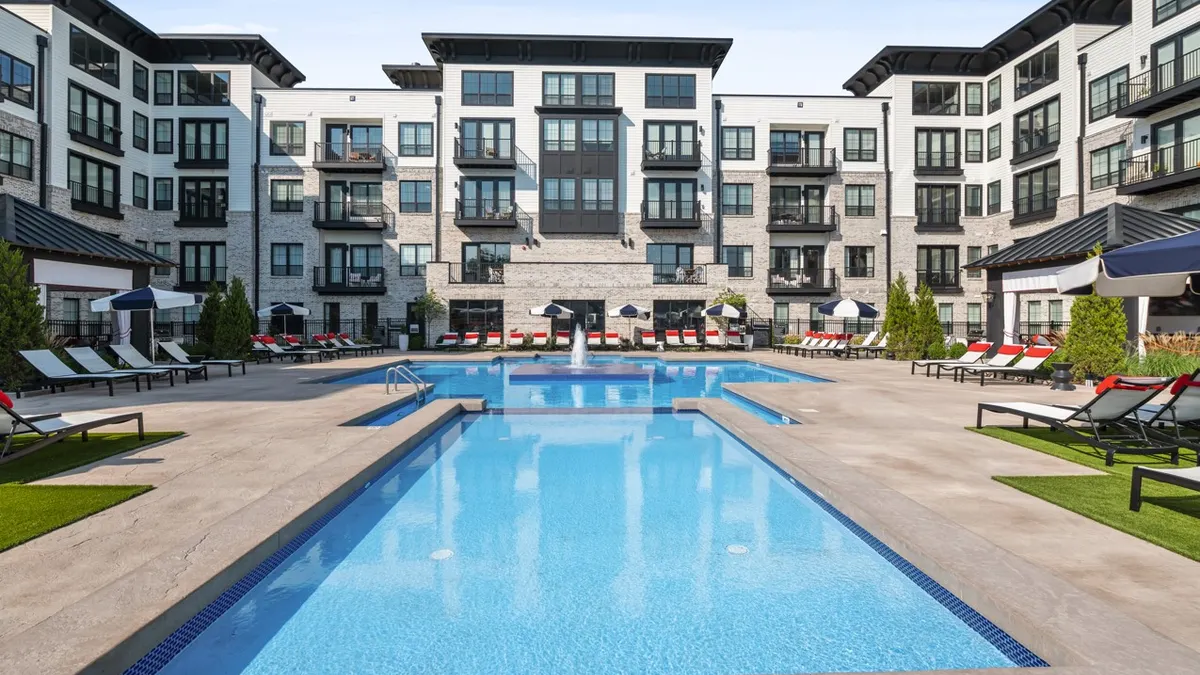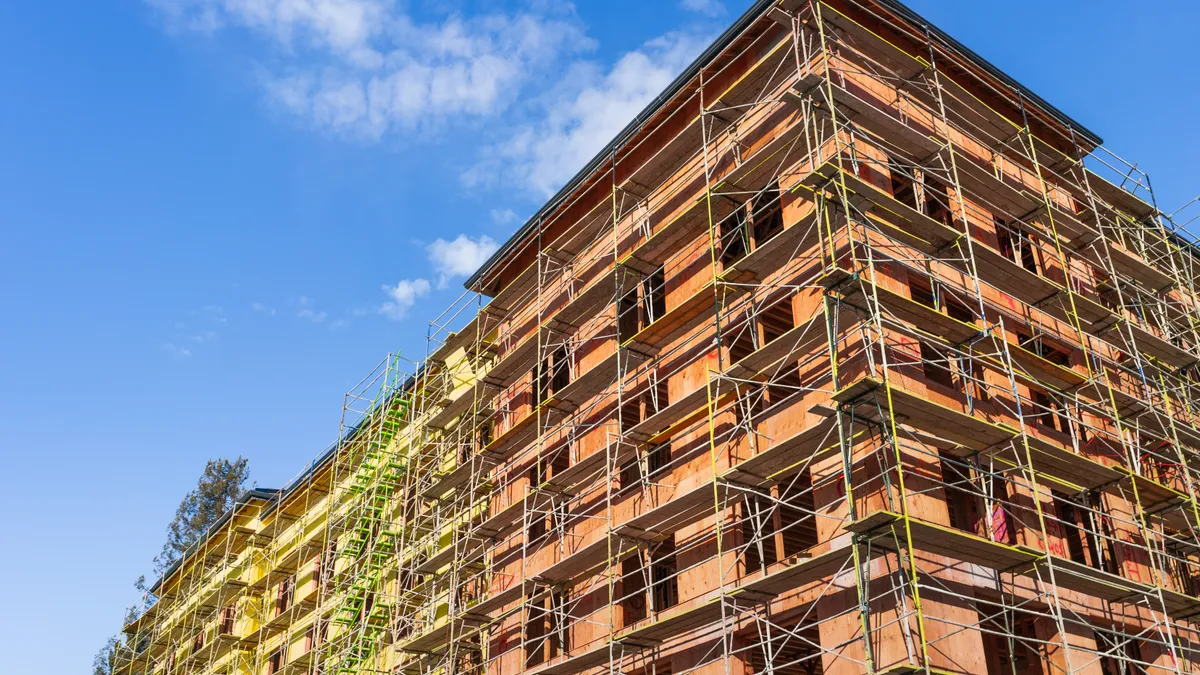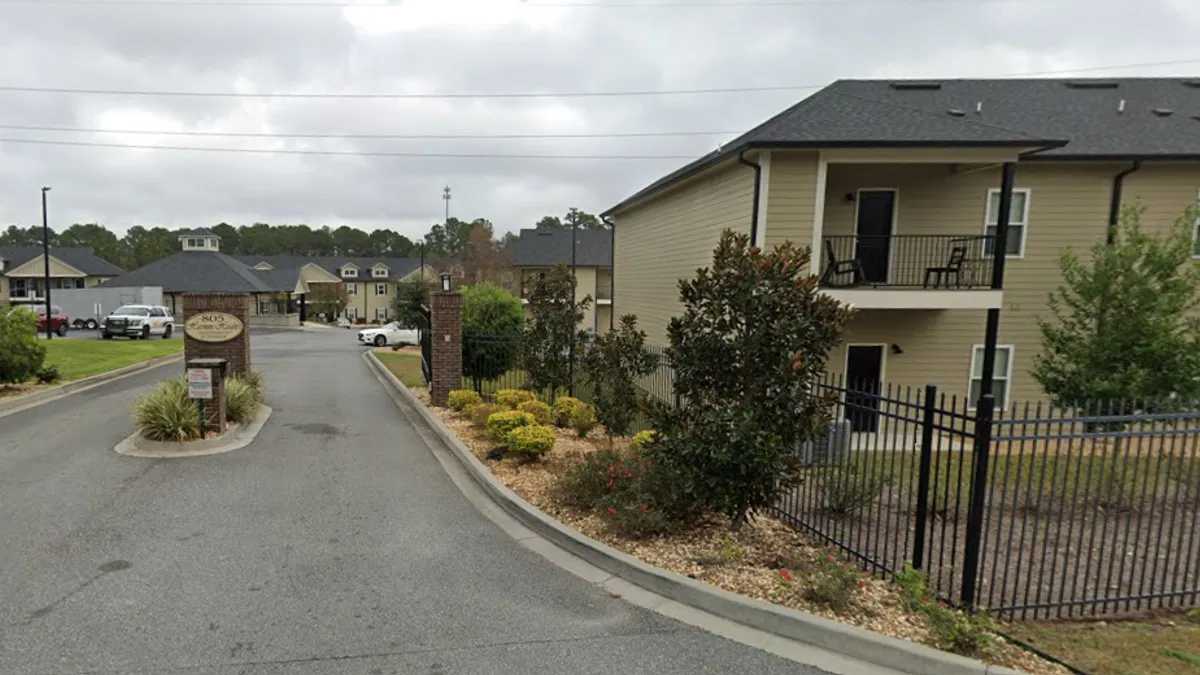The multifamily sphere, and commercial real estate in general, are facing challenging economic conditions with an uncertain future. As interest rates rise and inflation drives upward pressure on construction prices and rents, many industry professionals are faced with a looming question — stay the course or change strategy in anticipation of the worst?
To offer guidance on this question — and what to do when the answer isn’t clear — real estate consulting firm RCLCO recently examined the most common queries it has received from clients about the market’s greatest challenges during an online webinar. Here are some of those questions and answers with relevant insights for the multifamily industry:
Are we heading into a recession?
The economy is definitively slowing down, with negative GDP growth and high inflation in the first quarter of 2022, Bill Maher, director of strategy and research at RCLCO, said in the firm’s recent “Making Decisions in Real Time Amid Uncertainty” webinar. That said, a majority of financial sources –- including Morgan Stanley, S&P Global and The Wall Street Journal — place the probability of a recession within the next 12 to 24 months at 50% or less, according to data presented in the webinar.
However, for some, this probability is rising. The Wall Street Journal’s probability rating, for example, has increased by over 10% since January, its highest mark since late 2020.
Given that mixed outlook, RCLCO is planning ahead for recession conditions and advising clients to act with caution. Yet it's also maintaining its own 2022 business plan.
“We’re talking about this and planning for this,” said RCLCO CEO Adam Ducker, “but also encouraging our clients to stick to strategy."
He recommended operators remain thoughtful and nuanced in their pivots, and to stay focused on demand conditions and structural changes in the way people use real estate.
"Be prepared for surprises, volatility," Ducker said. "But work through it.”
Will real estate fundamentals hold in a recession?
Unlike past recessions, Maher said, real estate would not likely be a major contributor to a recession, given current conditions. Vacancy rates for most property types — office as a notable exception – are holding well below average.
Taylor Mammen, CEO of RCLCO Fund Advisors, which serves institutional investor clients, expects current fundamentals to stay strong even in a recession.
“Those property types that meet needs or very highly demanded services are likely to perform well, in large part because they’re not overbuilt,” said Mammen.
Where are interest rates heading?
While 10-year Treasury forecasts vary widely by source, interest rates are generally expected to rise at a moderate rate over the next 10 years — a readjustment following the large interest rate dips spurred by the COVID-19 pandemic.
Moody’s anticipates that interest rates will rise to 4% by 2026, while Oxford Economics expects a dip down to 2.8% by then. But navigating interest rate fluctuations has always been a part of working in real estate.
“Bear in mind this is not entirely unexpected,” Ducker said. “This is an economic outlook in which people can do business. It doesn’t mean no pressure, [and] it doesn’t mean there’s not a strategy to manage the change in borrowing costs.”
Where are real estate cap rates heading?
While there is some upward pressure on cap rates from higher interest rates and borrowing costs, cap rates are “very sticky” and do not experience much movement when markets are strong, Maher told Multifamily Dive following the webinar. Cap rates move in the opposite direction of asset values, so prices are moderating.
Still, in the current high borrowing rate environment, investors can overcome cap rate difficulties by taking on shorter term debt or negative leverage.
“Real estate markets are very healthy right now,” Maher said. “So I don't think it will have much impact until there's an economic event, we're really in a recession and rents and occupancy start heading down for properties. That would be the real trigger.”
Will rising prices and interest rates impact the single-family housing market?
Both base home prices and mortgage rates have risen dramatically in the past year. The current 30-year mortgage rate stands at 5.3%, doubling its December 2020 low. It stands about on par with mortgage rates throughout the 2010s, but falls below the historic highs seen in the 1980s.
This most recent rise in interest rates corresponds with a jump in the average monthly 30-year fixed mortgage payment, up 68% from $1,248 before 2020 to $2,075 today.
“It seems like this will have a big impact, particularly at the starter and the lower priced part of the market,” Maher said.
Ducker said that rising prices have led some single-family builders to exercise greater caution and hold back from engaging in the market in the same way they once had, particularly “value-oriented” builders. However, he noted that the relationship between prices and interest rates isn’t perfect - it is, in some part, a function of the rising cost of for-sale homes.
“One of the reasons that [median] prices have gone up so much is because we have largely stopped building homes priced below $300,000 over the past decade… today, the for-sale housing market serves a third of the American public. It’s not nearly as dependent on entry-level home sales,” he said.
Will higher material costs slow down construction?
The price of construction materials is rising faster than the Consumer Price Index and the Producer Price Index for all commodities, according to data from the Bureau of Labor Statistics.
However, as Maher pointed out, real estate net operating incomes are also on the rise along with rents, which is making up some of the difference in cost. In particular, the net operating income for multifamily is very close to the current PPI for construction materials.
In certain markets, because of this, new development still pencils out.
“In a lot of cases, people in development have become comfortable with the rise in revenue to offset the costs, and in other cases not,” Ducker said.
He added that this is an equation that developers are weighing carefully, and some projects have been delayed or dropped due to rising costs. “We can describe this market as efficient, with people making good decisions about where the cost can be borne,” he said.



















